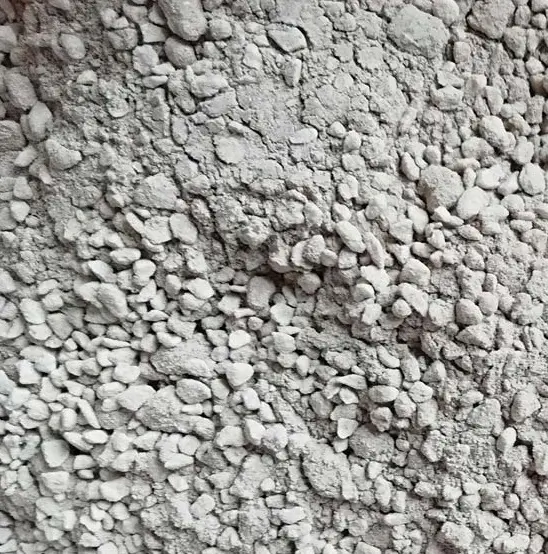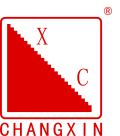1.Alumina cement castables
Alumina cement castables are generally used in the low-temperature zone, flue area, and furnace body of heating furnaces with a temperature not exceeding 1300°C. Alumina cement castables are a type of castable produced by mixing various refractory aggregates and powders in a certain proportion using aluminate cement as a binder. They have the characteristics of fast setting speed, high strength, good thermal shock resistance, and good slag resistance. While meeting the refractory performance of the heating furnace body, they also improve the construction performance of the furnace body.
2.Self-leveling castables
Self-leveling castables are suitable for areas in heating furnaces with complex structures that cannot be vibrated manually. They have a maximum operating temperature of 1500°C and are characterized by good thermal shock resistance, high refractoriness, and ease of construction, requiring almost no vibration.
3.Low-cement castables
Low-cement castables are suitable for use in the high and medium temperature zones of heating furnaces, operating between 1400°C and 1500°C. Low-cement castables are manufactured using micronized powder as a binder, aluminate cement as a setting accelerator, and some coal repellent and water-reducing agents. Their key characteristics include moderate setting speed, excellent thermal shock resistance, high refractoriness under load, strong slag resistance, and high refractoriness.
4.Phosphate castables
Phosphate castables are suitable for heating furnace bottoms and other areas subject to severe material friction and hot air erosion. They are used at temperatures between 1000 and 1600°C. They use phosphoric acid or phosphates as a binder, and alumina-calcium cement and magnesia as coagulants. They are characterized by high refractoriness, excellent thermal shock resistance, high compressive strength, strong erosion and impact resistance, and good wear resistance (improved by adding a small amount of steel fiber).
5.Mullite Castables
Due to their high thermal shock resistance, erosion resistance, dimensional stability, and high operating temperature, mullite castables are commonly used in key areas such as heating furnace walls, roofs, and pressure beams, or for prefabricating burner bricks.
6.Drying Slag Resistant Castable
Drying slag resistant castable is suitable for the bottom of heating furnaces and areas where iron oxide slag is deposited. It can be used at temperatures up to 1600°C. Its main features include high refractoriness, excellent thermal shock resistance, and excellent resistance to corrosion from iron oxide slag within the heating furnace.
7.Lightweight Castables
Lightweight castables are suitable for thermal insulation in furnace walls, roofs, flues, and other areas.
High-strength lightweight castables can also be used as working linings in exhaust systems and hot air ducts. They are characterized by low bulk density, low reheat linear variation (good thermal stability), low thermal conductivity, and a certain degree of refractoriness. They combine the advantages of both refractory and thermal insulation materials.

8.Refractory Fiber Materials
Refractory fiber materials (felt, boards, bricks, blocks, and blankets, etc.) have been widely used in various furnaces and kilns since their introduction in my country in the early 1980s. In recent years, refractory fiber spray coatings and refractory fiber castables have also seen widespread adoption. This is primarily due to the fact that when used as furnace wall materials, refractory fiber offers lightweight walls, rapid furnace temperature rise and fall rates, and excellent thermal stability. When used as a furnace insulation layer, it provides excellent sealing properties and significant energy savings. When used as a furnace lining, refractory fiber spray coatings (or refractory fiber castables) allow for mechanized construction, shortening construction times.
1) Refractory Fiber Bricks. Refractory fiber bricks can be used as thermal insulation linings for furnaces and kilns. They are characterized by low thermal conductivity, low heat capacity, high strength, and excellent thermal shock resistance.
2) Refractory fiberboard. Refractory fiberboard has excellent mechanical and structural strength, low thermal conductivity, low shrinkage, resistance to air erosion, and a flat surface, making it easy to construct.
3) Refractory fiber cotton (blanket). Refractory fiber cotton (blanket) has low thermal conductivity, low heat storage and good thermal insulation performance; good resistance to thermal shock, corrosion and crystallization; good sound insulation and mechanical strength, good fiber elasticity, small high temperature shrinkage, easy to process and install.
9.Refractory plastics
In the past decade, in the newly built large-scale heating furnaces in my country, plastics have been widely used to replace traditional refractory brick linings and refractory castables. Its advantages are: no gaps in the whole ramming, strong integrity, good airtightness, low heat loss, energy saving; high high temperature strength, good thermal shock resistance, strong spalling resistance, good resistance to mechanical vibration, can extend the life of the furnace and reduce production costs. Plastics can be used for the working surface of the furnace roof and furnace wall of the heating furnace.
In the heating furnace lining, some shaped refractory products (such as high alumina bricks, clay bricks and magnesia bricks) and some shaped insulating refractory products (such as clay insulating refractory bricks, high alumina insulating refractory bricks and diatomaceous earth insulating refractory bricks) are also used. These refractory materials can be produced, inspected and used in accordance with national refractory material standards.
